GST Reconciliation: How to Reconcile your Books With GST?

GST reconciliation has been one of the major concerns of the taxpayers. GST compliances involve the filing of multiple returns. For instance, for reporting sales, we have GSTR-1 and GSTR-3B. For reporting purchases, we have GSTR-3B which involves auto-population of details from GSTR-2B. Further, the details reported in the GST returns shall match with the details furnished to the Income Tax Department as well.
Thus, a thorough GST reconciliation exercise needs to be carried out to ensure uniformity in the information furnished. But how can it be done?
The GST Reconciliation Roadmap
To simplify things, here’s a checklist of the matching and reconciliation under GST that you should follow to keep your records clean and tallied:
1) Books Vs. GSTR-1 and GSTR-3B: Your net sales as per books should match with GSTR-1 and GSTR-3B.
2) GSTR-1 Vs. GSTR-3B: As the details of GSTR-1 get auto-populated in GSTR-3B, therefore, instances of mismatch between GSTR-1 and GSTR-3B have reduced considerably. However, this was not the case earlier. Also, in case any changes are made at the time of filing GSTR-3B, then a mismatch is bound to occur.
3)Books Vs. GSTR-2B & GSTR-2A: Your purchases (as per books) should match with GSTR-2B & GSTR-2A. GSTR-2B is the static return that shows the ITC that you are eligible to claim for a particular month. In case your supplier files his GST returns after the due date, then you cannot claim the relevant ITC in the current tax period as it won’t get reflected in GSTR-2B. Therefore, you will have to wait till the next tax period. This is because of Rule 36(4) [discussed later]. However, GSTR-2A is a dynamic return that shows the ITC for a particular month as per the invoices uploaded. It can be helpful to know all the invoices that are uploaded by the suppliers for a particular month.
As the ITC shall be claimed as per GSTR-2B, therefore, it is important to reconcile books with GSTR-2B in order to follow up on suppliers for timely filing of their GST returns.
Major Reasons for Mismatch
If you find a mismatch between your records and GST returns, then the following might be one of the reasons for the mismatch:
1) ITC related Mismatch:
- Your supplier has not uploaded the invoice or debit note for supplies made to you.
- Your supplier has filed the return after the due date. In such a case, the relevant ITC won’t be reflected in your GSTR-2B for the current tax period.
- You might have erred in claiming the ITC for some of your invoices or debit notes either due to a mistake in filing return or a mistake in the recording of the invoices in your books of accounts.
- Furnishing of incorrect details by the supplier. This can either lead to excess credit or lower credit available on the portal.
2) Supply Related Mismatch
- You might have omitted the upload of invoices or credit notes leading to a mismatch in books and GSTR-1.
- Failure to record the supplies made or sales return in your books of accounts.
- Furnishing of incorrect details while filing GST returns.
Consequences of Mismatch and Unreconciled Records
GST reconciliation and matching is important because, in case of a mismatch between the books and information furnished through GST returns, it can attract proceedings by the GST department. Following can be the consequences of mismatch in GST:
- Issue of show cause notice and initiation of assessment proceedings by the GST department.
- Reversal of input tax credit or increase in output tax liability.
- Levy of interest and penalties for non-furnishing of adequate information.
- Unnecessary legal proceedings.
Implications of Certain Legal Provisions
Following are some of the legal provisions that make reconciliation under GST necessary:
Rule 36(4): It prescribes that a registered person cannot avail of the ITC for any invoice or debit note unless the supplier has furnished the details of such invoice or debit note in his GSTR-1 or Invoice Furnishing Facility and such invoice or debit note gets reflected in the GSTR-2B of the recipient of the invoice or debit note.
Section 16(2)(aa): It prescribes the condition for claiming ITC under GST. According to Section 16(2)(aa), it is important that the supplier furnishes the details of the invoice or the debit note in the statement of outward supplies (GSTR-1) and it has been communicated to the recipient of such supply.
Section 44 read with Rule 80: Section 44 requires every registered person [excluding person paying tax under Section 51 or 52 (TDS and TCS), input service distributor, non-resident taxable person and casual taxable person] shall furnish an annual return. It may include a self-certified reconciliation statement that reconciles the value of supplies as declared in the GST returns with the audited annual financial statements.
However, if the aggregate turnover of such person exceeds Rs. 5 crores during the financial year, then it shall be mandatory to furnish a self-certified reconciliation statement in Form GSTR-9C along with the annual return.
Both the annual return and the reconciliation statement in GSTR-9C shall be filed on or before 31st December following the end of the financial year.
However, vide Notification No. 31/2021 – Central Tax dated 30th July, 2021, registered persons whose aggregate turnover is up to Rs. 2 crores in the Financial Year 2020-21 are exempted from filing the annual return for the said financial year.
Last Date to give Effect to the Changes in GST Returns
Finance Act, 2022 amended the last date for rectifying any changes in the GST returns. Therefore, while carrying your reconciliation under GST, if you find any discrepancies, then you need to make the relevant changes before the following due dates:
- A registered person cannot claim ITC for any invoice or debit note after 30th November following the end of the financial year or the date of furnishing the annual return, whichever is earlier.
- The last date for furnishing the details of the credit notes issued by the supplier is 30th November following the end of the financial year or the date of furnishing of the annual return, whichever is earlier.
- Rectification of any omission or error in details furnished in GSTR-1 shall be allowed till 30th November following the end of the financial year or the date of furnishing the annual return, whichever is earlier.
- Rectification of omissions and errors in furnishing the details in GSTR-3B, GSTR-4 (Composition), GSTR-7 (TDS) and GSTR-6 (ISD) can be done till 30th November following the end of the financial year or the actual date of furnishing the annual return, whichever is earlier.
- An e-commerce operator liable to collect TCS shall be allowed to rectify the omissions and errors in details furnished in the GST return till 30th November following the end of the financial year or the actual date of furnishing the annual statement, whichever is earlier.
In case of any query, please feel free to contact the ASC Group.

Leave a Reply